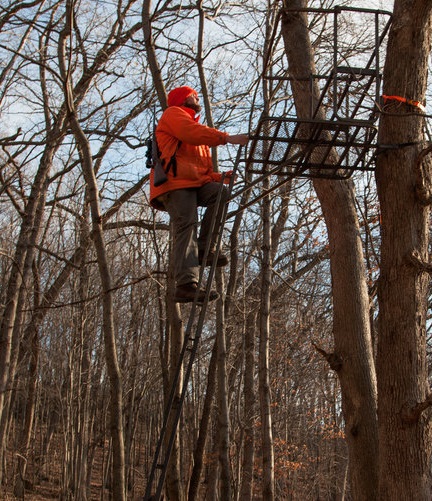
Tom Wrasse is at his hunting shack alone. Light pours into the small room from a window framed by antlers, harvested from the surrounding central Wisconsin woods. On the opposite wall is a collage of fading photos, showing how big the hunting parties out here used to be.
“I try to keep the tradition alive,” Wrasse says, looking at the photos over a cup of coffee. “But no, they’ve all gone their separate ways.”
In rural Wisconsin, the passion for hunting still appears to burn as bright as the blaze orange jackets you’ll see stalking through fields or clambering up into trees during deer season. But stop into a meat processing center or a sporting goods store, ask about it at a bar or a hunting shack and you’ll hear from people like Wrasse: Fewer people are hunting. “It’s just kind of fading away,” he says.
A new survey by the U.S. Fish and Wildlife Service shows that today, only about 5 percent of Americans, 16 years old and older, actually hunt. That’s half of what it was 50 years ago and the decline is expected to accelerate over the next decade.
Meanwhile other wildlife-centered activities, like birdwatching, hiking and photography, are rapidly growing, as American society and attitudes towards wildlife change. Continue reading this article from NPR >>> https://www.npr.org/2018/03/20/593001800/decline-in-hunters-threatens-how-u-s-pays-for-conservation
